Art of noise: Xavier Veilhan’s live sound experiment hits all the high notes in Venice
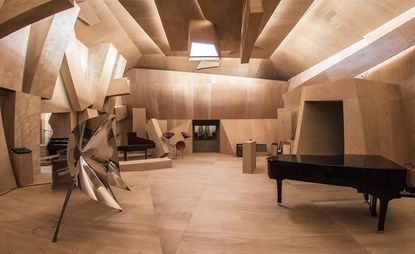
If Xavier Veilhan’s diverse artistic record is anything to go by, his offering at this year’s Venice Biennale could cover pretty much anything – from film, to sculpture to architectural installation. As it happens, it reaches into an area few could have anticipated. Overseen by similarly pioneering curators Christian Marclay and Lionel Bovier, Veilhan and his atelier have created a fully functional recording studio in which over a hundred musicians will jam throughout the Biennale’s seven month run.
The surprises don’t stop there. Eight months ago, just as Veilhan was drawing up plans for the physical pavilion, he met creative director Rémi Babinet, co-founder of French advertising agency BETC. They talked and talked – about politics, technology, collaborations, human relationships. From these broad, questioning conversations, a singular idea stemmed: they wanted to find a way to bring Veilhan’s Biennale offering to the masses.
‘Initially, we didn’t know what we were talking for – all I remember it was very interesting,’ recalls Veilhan. ‘Since BETC’s skills lie in communication, we eventually realised that they could help Studio Venezia reach a broader, global audience.’
Together, they formulated a plan to build a low-fi website, Echoes of the Studio, that could live-stream recordings direct from Studio Venezia to anyone with an internet connection. Hosted by Deezer (France’s answer to Spotify), the graphic result sees feverish explosions of 3D radio waves leap across your computer screen in time to the live crescendos of the Venice-based music makers.
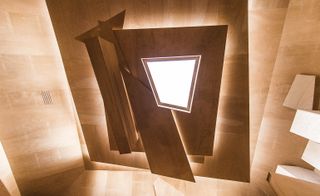
The plywood and rockwool surrounds of the French Pavilion.
The website couldn’t look more different to the smooth, wooden walls of the French Pavilion, with its stylish black grand piano and the jovially oversized wooden double bass. The distinction was entirely deliberate. ‘We were both keen to keep the website and the Pavilion separate, aesthetically,’ Babinet explains. ‘The site works like a radio. It focuses on immateriality, so the listeners can use their imagination. This was more interesting for me than to try and represent or recreate the pavilion physically.’
This being said, the website does contain light impressions of the constructed space in Venice. Particularly in the snaking wooden beams that zigzag across the Pavilion’s walls and ceiling, which half resemble the gyrating radio waves that burst in red and black.
It's abstract stuff – but that’s what Babinet loves about it. ‘The project so difficult to define,’ he explains. ‘It's not quite a concert. At any given moment, you don’t exactly know what’s going to happen – it’s an analogy for the human experience.’
This relentless interest in the human experience is central to both Babinet and Veilhan. It’s what drove them to make the visitor – or listener – a necessary asset. Those who are in Venice for the Biennale will be welcomed in to the immersive space to interact with the musicians and the instruments. Those who are overseas are similarly welcomed to click through and explore the site as they wish. ‘It’s something that pre-occupies many artists in my generation,’ Veilhan explains. ‘The exhibition does not exist without a visitor.’
As such, the whole stand has been democratised, available to every and any interested party. Veilhan makes no secret of the project's political engagements. ‘We have a new president! And we feel so much better,’ he announces. ‘This whole process aims to preserve a certain poetry, or fragility – a softness, if you like. I hope we are now in better hands to promote this politically.’
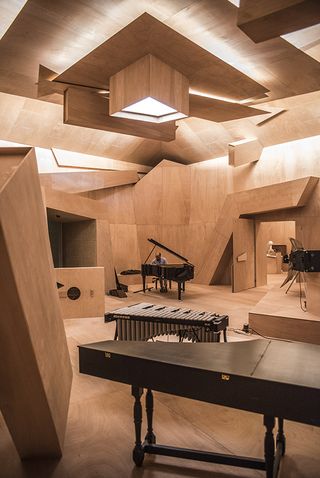
Alongside curators Christian Marclay and Lionel Bovier, Veilhan has invited musicians and artists from across the globe to jam in the studio for the duration of the Biennale.
Veilhan teamed up with French advertising agency BETC to extend the pavilion online with an experiential website. Echoes of the Studio live-streams recordings direct from Studio Venezia, transforming the sound into feverish digital graphics
Virtual radio waves leap across the computer screen in time to the live crescendos of the Venice-based music makers

The pavilion features a number of instruments from different musical genres.

The smooth, wooden panelling of the French Pavilion deliberately constrasts the virtual experience.
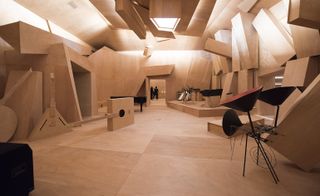
The performing artists are only being partially unveiled, in order to encourage experimentation among the participants.
INFORMATION
The Venice Biennale runs from 13 May – 26 of November. For more information, visit the Studio Venezia website, the BETC website, and the Deezer website
Wallpaper* Newsletter
Receive our daily digest of inspiration, escapism and design stories from around the world direct to your inbox
Elly Parsons is the Digital Editor of Wallpaper*, where she oversees Wallpaper.com and its social platforms. She has been with the brand since 2015 in various roles, spending time as digital writer – specialising in art, technology and contemporary culture – and as deputy digital editor. She was shortlisted for a PPA Award in 2017, has written extensively for many publications, and has contributed to three books. She is a guest lecturer in digital journalism at Goldsmiths University, London, where she also holds a masters degree in creative writing. Now, her main areas of expertise include content strategy, audience engagement, and social media.
-
 Coming soon: a curated collection of all the new EVs and hybrids that matter
Coming soon: a curated collection of all the new EVs and hybrids that matterWe've rounded up new and updated offerings from Audi, Porsche, Ineos, Mini and more to keep tabs on the shifting sands of the mainstream car market
By Jonathan Bell Published
-
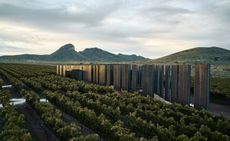 Southern Arizona sets the scene for a corking vineyard experience at Los Milics
Southern Arizona sets the scene for a corking vineyard experience at Los MilicsLos Milics winery, designed by Chen + Suchart Studio, is set among vines at the foothills of the Mustang Mountains
By Sofia de la Cruz Published
-
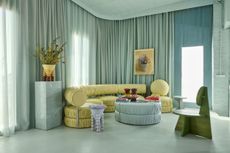 Spanish design studio Masquespacio's new HQ is a historical mansion bursting with colour
Spanish design studio Masquespacio's new HQ is a historical mansion bursting with colourDesign studio Masquespacio presents its new home and office, a bold and unique space in a beautifully refurbished historic villa near Valencia
By Léa Teuscher Published
-
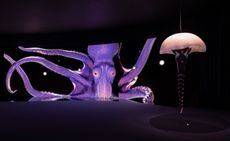 Josèfa Ntjam on her surreal utopias in Venice
Josèfa Ntjam on her surreal utopias in VeniceArtist Josèfa Ntjam and LAS Art Foundation bring other worlds to life with ‘swell of spæc(i)es’ at Accademia di Belle Arti di Venezia during the Venice Biennale 2024
By Hannah Silver Published
-
 Les Lalanne’s surreal world takes over Venice
Les Lalanne’s surreal world takes over Venice‘Planète Lalanne’, presented by Ben Brown Fine Arts, takes over Palazzo Rota Ivancich, with a cast of blue hippos, woolly sheep and giant grasshoppers
By Hannah Silver Published
-
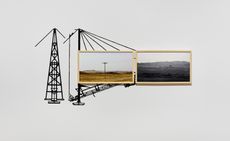 Aindrea Emelife on bringing the Nigerian Pavilion to life at the Venice Biennale 2024
Aindrea Emelife on bringing the Nigerian Pavilion to life at the Venice Biennale 2024Curator Aindrea Emelife has spearheaded a new wave of contemporary artists at the Venice Biennale’s second-ever Nigerian Pavilion. Here, she talks about what the world needs to learn about African art
By Ugonna-Ora Owoh Published
-
 Berlinde De Bruyckere’s angels without faces touch down in Venice church
Berlinde De Bruyckere’s angels without faces touch down in Venice churchBelgian artist Berlinde De Bruyckere’s recent archangel sculptures occupy the 16th-century white marble Abbazia di San Giorgio Maggiore for the Venice Biennale 2024
By Osman Can Yerebakan Published
-
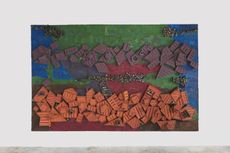 Elias Sime reflects on the destructive nature of technology in Venice
Elias Sime reflects on the destructive nature of technology in VeniceIn his solo show ‘Elias Sime: Dichotomy ፊት አና ጀርባ’ at the Venice Biennale 2024, the artist spotlights technology's destructive nature for humans and the environment
By Gameli Hamelo Published
-
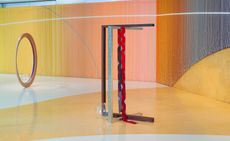 Kapwani Kiwanga considers value and commerce for the Canada Pavilion at the Venice Biennale 2024
Kapwani Kiwanga considers value and commerce for the Canada Pavilion at the Venice Biennale 2024Kapwani Kiwanga draws on her experiences in materiality for the Canada Pavilion at the 60th Venice Biennale
By Hannah Silver Published
-
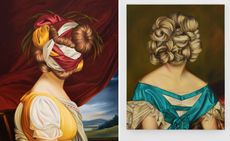 Venice Art Biennale 2024: a guide to what to see in and around the city
Venice Art Biennale 2024: a guide to what to see in and around the cityAs the Venice Art Biennale kicks off (20 April - 24 November 2024), here is an ever-growing list of what to see in and around Venice.
By Amah-Rose Abrams Last updated
-
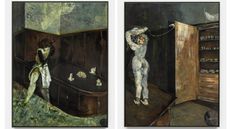 Guglielmo Castelli considers fragility and violence with painting series in Venice
Guglielmo Castelli considers fragility and violence with painting series in VeniceGuglielmo Castelli’s exhibition ‘Improving Songs for Anxious Children’ at Palazzetto Tito, Venice, explores childhood as the genesis of discovery
By Sofia Hallström Published